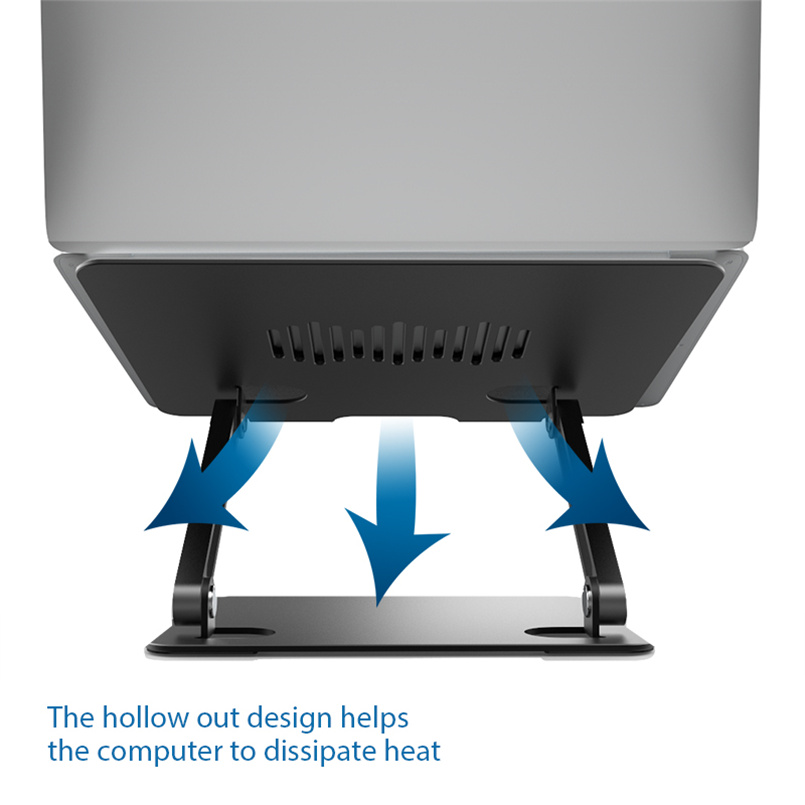Embedded Operating System (EOS) refers to the operating system used in embedded systems. The embedded system is divided into 4 layers, hardware layer, driver layer, operating system layer and application layer, as shown in the following figure. The embedded operating system is responsible for the allocation of all software and hardware resources of the embedded system, task scheduling, control, and coordination of concurrent activities. It must reflect the characteristics of its system, and it can be used to load and unload certain modules to achieve the functions required by the system. It is a widely used system software.

4-layer structure of embedded system
Embedded LINUX
Embedded Linux is an operating system that tailors and modifies the increasingly popular Linux operating system to run on embedded computer systems. Linux has the advantage of embedded. First, Linux is open source. Secondly, Linux has a small kernel, high efficiency, and can be customized. Its system kernel is only about 134KB. Third, Linux is a free OS, and Linux has embedded. Many features required by the operating system, highlighting that Linux adapts to a variety of CPUs and multiple hardware platforms and has stable performance, good tailoring, and easy to develop and use. At the same time, the structure of the Linux kernel is very complete in terms of network. Linux has the most complete support for the most commonly used TCP/IP protocols in the network. Provides Ethernet, including 10 Mbps, 100 Mbps, and Gigabit, as well as wireless networks, Token Ring, fiber optics, and even satellite support.
Migration steps: 1. Migration of Bootloader; 2. Migration of embedded Linux operating system kernel; 3. Creation of root file system of embedded Linux operating system; 4. Writing of peripheral Linux driver on circuit board.
WinCE
WinCE is the foundation of Microsoft's embedded and mobile computing platform. It is an open, scalable 32-bit embedded operating system. It is based on the handheld computer-based electronic device operating system. It is a streamlined Windows 95, Win CE. The graphical user interface is quite good. WinCE is a multi-threaded, full-priority, multi-tasking operating system designed from a finite resource platform as a whole. Its modular design allows it to be customized for consumer electronics from handheld computers to dedicated industrial controllers. The basic kernel of the operating system requires at least 200K of ROM.
In general, a WinCE system consists of four layers: an application, a WinCE kernel image, a board support package (BSP), and a hardware platform. The basic software platform is mainly composed of WinCE system kernel image (OS Image) and board support package (BSP). Because the WinCE system is a tightly coupled system of hardware and software, even if the CPU processor is the same, if the peripheral hardware on the development board is different, it is necessary to modify the BSP to complete a new BSP. So in other words, the WinCE migration process is mainly to rewrite the BSP process.
Android
Android is a software set that is specific to mobile devices, including operating systems, middleware, and some important applications. Android, a fully open source operating system, is a software stack consisting of operating system Linux, middleware, and core applications. Through the API provided by the android SDK and the corresponding development tools, programmers can easily develop applications on the android platform. The whole system consists of five parts: application, application framework, application library, Android runtime, Linux kernel (Linux Kernel). The Android operating system has built-in applications, including email clients, SMS programs, calendars, maps, browsers, contacts, and other programs. It's worth mentioning that all of these programs are written in Java.
The main job of porting is to drive and port the hardware abstraction layer. In order to better understand and debug the system, you should also properly understand the upper layer's call to the hardware abstraction layer.
TInyOS
TInyOS is an open source embedded operating system developed by the University of California at Berkeley and used primarily in wireless sensor networks. The program uses a modular design, so its program core is often very small, generally the core code and data is about 400 Bytes, which can break through the limitations of sensor storage resources. TInyOS provides a set of reusable components, and an application can connect various components through the A Wiring Specification to perform the functions it needs.
Embedded real-time operating system (RTOS)
There are stringent requirements on the response time of the system in the fields of industrial control, military equipment, aerospace, etc., which requires the use of real-time systems. When external events or data are generated, they can be accepted and processed at a fast enough speed, and the results of the processing can control the production process or respond quickly to the processing system within a specified time, and control all real-time tasks to be coordinated. The embedded operating system that is running. Therefore, the understanding of the embedded real-time operating system should be based on the understanding of the embedded system to add response time requirements.
FreeRTOS
FreeRTOS is a small embedded system with a mini operating system kernel. As a lightweight operating system, functions include: task management, time management, semaphores, message queues, memory management, logging functions, etc., which can basically meet the needs of smaller systems. FreeRTOS tasks can choose whether to share the stack, and there is no task limit, multiple tasks can be assigned the same priority. The rotation scheduling of the same priority task can be set as a deprived kernel or an inelastic core.
The transplantation of FreeRTOS mainly needs to rewrite the following three files. 1.portmacro.h 2.port.c 3. port.asm
μTenux
Based on the ARM microcontroller platform, μTenux is the most suitable for ARM Cortex M0-M4 series of microcontrollers. The code is open source and free. It is a powerful preemptive real-time multitasking operating system. In addition to the general characteristics of the real-time embedded operating system: portability, curable, and croppable, μTenux has the following advantages: (1) Microkernel. No MMU, ROM/RAM footprint is small, the ROM is up to 60KB, the minimum is 10KB; RAM is up to 12KB, the minimum is 2KB; (2) Open source is free; (3) Supports all 32-bit ARM7/9 and Cortex M series microcontrollers (4) Configurable up to 256 tasks and 140 task priorities; (5) Good commercial support, T-Engine Forum for general maintenance.
The migration mainly includes: chip system clock migration, peripheral porting and general-purpose output/input port porting, and watchdog module porting. Due to the importance of kernel code and its significance throughout the migration, and for better real-time performance of the entire system, you can write the startup code of the operating system in assembly language.
VxWorks
The VxWorks system provides efficient semaphores, message queues, pipes, and network-transparent sockets between multiple processors and tasks. Another key feature of real-time systems is hardware interrupt handling. In order to get the fastest and most reliable interrupt response, the VxWorks system's interrupt service routine ISR has its own context. The VxWorks real-time operating system consists of more than 400 relatively independent, short and refined target modules. Users can select the appropriate modules to tailor and configure the system according to their needs, which effectively ensures the security and reliability of the system. The system's linker automatically links some target modules as needed by the application. In this way, through the on-demand combination between the target modules, many applications that meet the functional requirements can be obtained.
The porting process can refer to some BSP codes on the network. The English version of BSP is called board support package, which is the board support package. Its function is to provide an operation interface for the VxWorks kernel for special hardware platforms.
μClinux
As an open source operating system, embedded Linux is widely used for its low price, powerful and portable features. μClinux is an embedded Linux designed for processors without MMU, which is very suitable for low-end embedded. The needs of the system. Under the GNU General Public License, users of the μClinux operating system can use almost all Linux API functions, and will not be affected by the lack of a memory management unit MMU; moreover, μClinux is properly tailored based on standard Linux. And optimization, forming a highly optimized, compact code embedded Linux, small size, but still retains most of the advantages of Linux, such as good stability, strong network functions, good portability, complete File system support functions, as well as standard rich application interface APIs, can support small and extensible CPUs like ARM7TDMI.
eCos
eCos Chinese translates to an embedded configurable operating system or an embedded configurable real-time operating system. Suitable for deep embedded applications, the main application objects include consumer electronics, telecommunications, automotive equipment, handheld devices and other low-cost and portable applications. eCos is a development source code software without any copyright fees. The biggest feature of eCos is modularity and the kernel is configurable. If embedded Linux is too large, then eCos may be able to meet the requirements. It is a portable open source embedded RTOS for 16-bit, 32-bit and 64-bit processors. Unlike embedded Linux, it is designed by a working group that specializes in designing embedded systems. eCos has a wealth of features and a configuration tool that allows you to pick the features you need.
The eCos software is divided into several modules, and the porting work is mainly carried out in his hal layer. The so-called hal (hardware abstraction layer) is to put together hardware-related software.
μC/OS-II
μC /OS-II is a complete, portable, curable, and tailorable preemptive real-time multitasking kernel. Most of the μC/OS-II code is written in ANSI C, and contains a small amount of assembly code that can be used by microprocessors of different architectures. Its compact and compact structure supports preemptive multitasking scheduling and management. The real-time operating system manages up to 64 tasks and provides internal program memory management, system runtime management, multi-tasking real-time scheduling and management. Since its author occupies and retains 8 tasks, there are up to 56 tasks left for the user application. The priority assigned to each task must be different. This means that the μC/OS-II does not support the time slice rotation scheduling method. μC/OS-II sets up a separate stack space for each task, enabling fast task switching.
Migrating the μC/OS-II operating system to the target processor requires both hardware and software considerations. On the hardware side, the target processor must meet the following conditions:
A processor C compiler can generate reentrant code;
2 can be turned on/off in C language;
The 3 processor supports interrupts and is capable of generating timed interrupts (usually between 10 and 1000 Hz);
4 processors can support a hardware stack that holds a certain amount of data;
The 5 processor has instructions for reading and storing the stack pointer and other registers onto the stack or memory.
On the software side, there are mainly processor-related code migrations, which are distributed in three different files: OS_CPU.H, OS_CPU_C.C, and OS_CPU_A.ASM.
Laptop Holder is upgraded high-strength aluminum alloy, all-aluminum alloy is durable and has a delicate texture. Laptop Holder Vertical is more stable and more durable. The size is enlarged and widened. Laptop Holder Portable is suitable for all laptops. Full non-slip silicone surface care, portable and foldable, six-level height adjustment. Laptop Holder Rose Gold is lightweight, portable and easy to store, stable without shaking, hollowed out heat dissipation design at the bottom. Laptop Holder Mount is new posture, just for more comfortable, ergonomically improved sitting posture.

Skyzonal Aluminum Laptop Stand, Portable Adjustable Aluminum Laptop Stand, Amazon Aluminum Laptop Stand
Shenzhen ChengRong Technology Co.,Ltd. , https://www.chengrongstand.com
